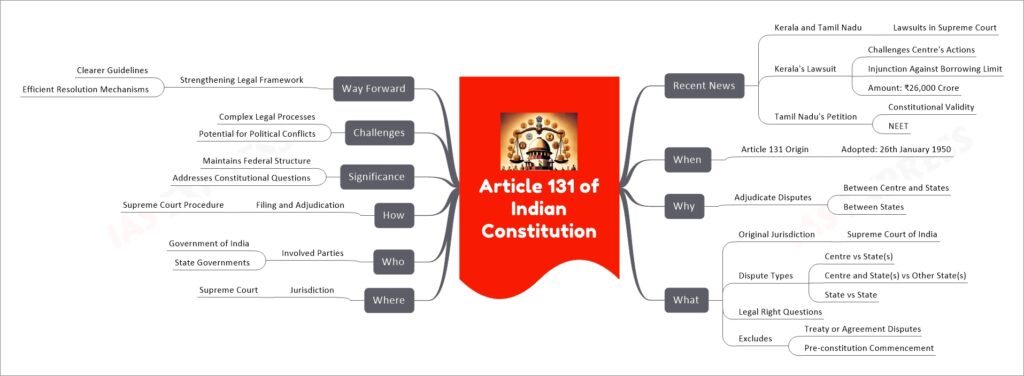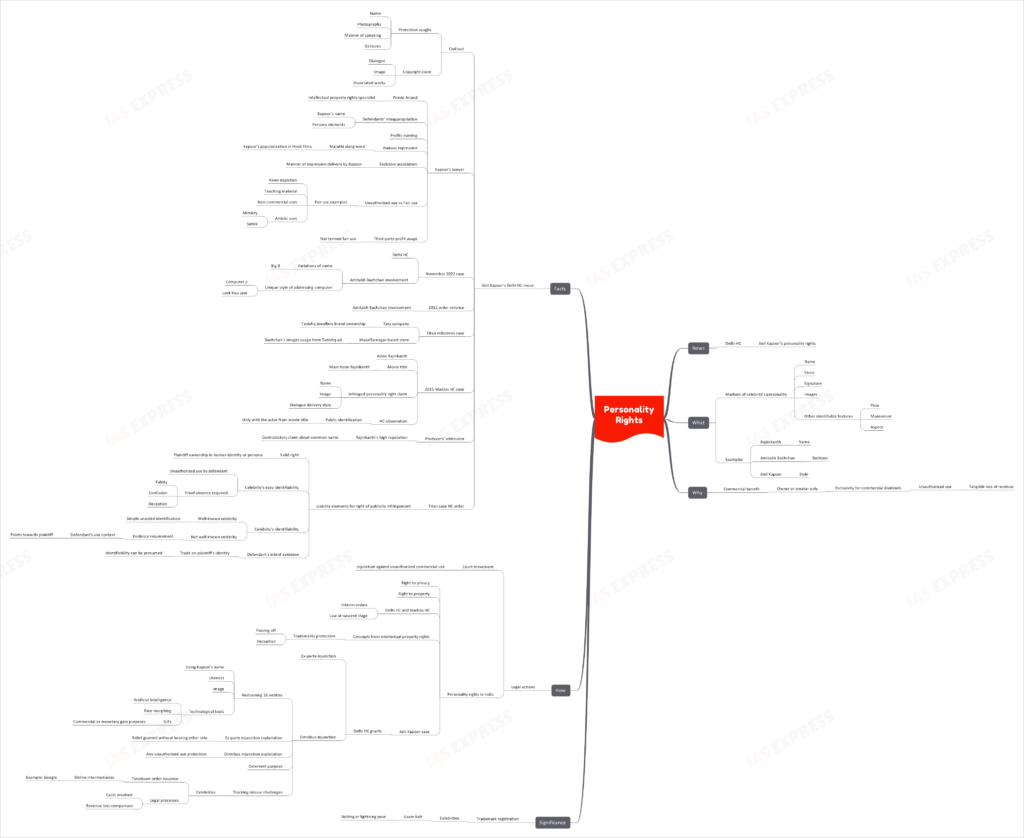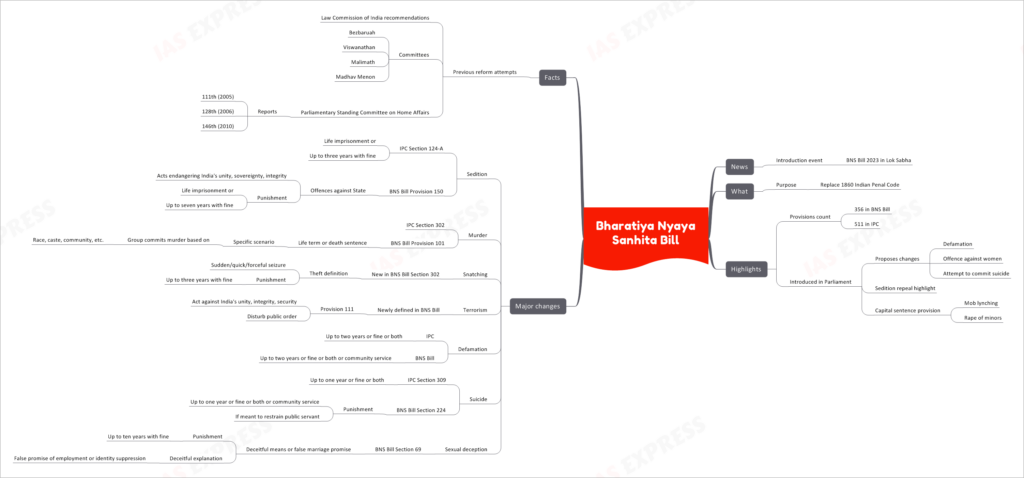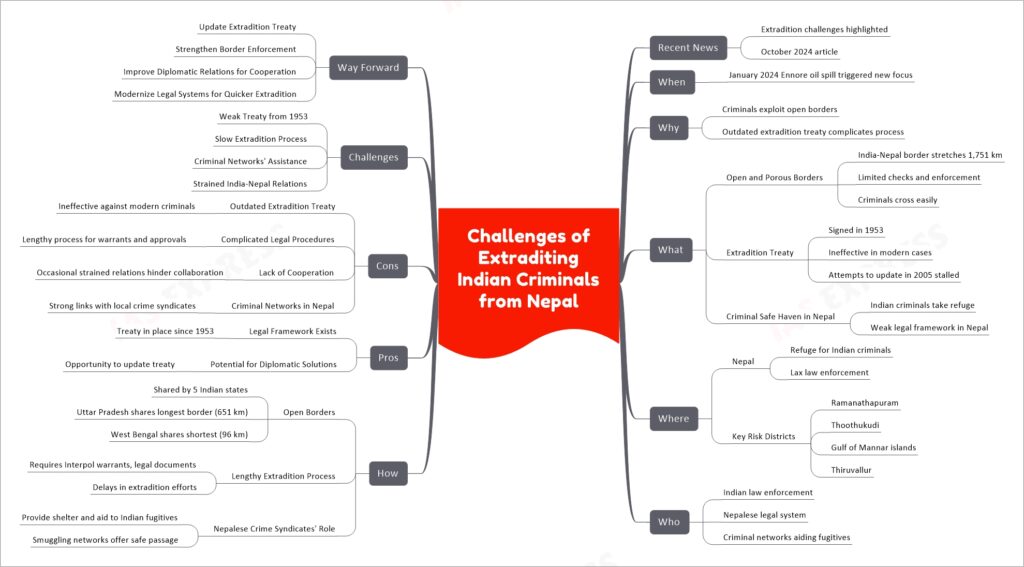India’s New Remission Policy: How SC’s Verdict Affects Prisoners

From Current Affairs Notes for UPSC » Editorials & In-depths » This topic
IAS EXPRESS Vs UPSC Prelims 2024: 80+ questions reflected
The Supreme Court of India has recently ruled that state governments must consider the premature release of eligible prisoners even if they have not submitted an application for remission. This decision represents a significant shift in the court’s stance on the remission process, which previously required a convict or their representative to apply for sentence reduction. This ruling, delivered by a bench of Justices Abhay S Oka and Ujjal Bhuyan, is expected to impact prison overcrowding and the rights of convicts, while also raising concerns about fairness and transparency in the criminal justice system.
Understanding Remission in Law
- Definition of Remission: The power of remission allows for the reduction of a convict’s sentence without overturning the original conviction. It is granted by the government based on certain conditions.
- Legal Provisions:
- Section 473 of the Bharatiya Nyaya Suraksha Sanhita, 2023 (BNSS) and Section 432 of the Code of Criminal Procedure, 1973 (CrPC) empower state governments to grant remission.
- Articles 72 and 161 of the Constitution grant the President and Governors the power to grant pardons, commutations, and remissions.
- Limitations on Remission:
- Under Section 475 of the BNSS (equivalent to Section 433A of the CrPC), prisoners serving a life sentence for offenses punishable by death cannot be released before completing 14 years of imprisonment.
- Earlier, remission could only be granted if the convict or someone on their behalf applied for it.
Supreme Court’s Shift in Stance
- Previous Judgments (2013):
- In Sangeet and Anr. v. State of Haryana (2013) and Mohinder Singh v. State of Punjab (2013), the court ruled that remission could not be granted suo motu (on the government’s own initiative). A formal application was necessary.
- Present Judgment (2025):
- The court observed that most state prison manuals already direct prison authorities to review remission eligibility.
- The existence of predefined remission policies negates the requirement for an application.
- Failure to consider remission cases automatically would be discriminatory and arbitrary, violating Article 14 (Right to Equality) of the Constitution.
- Implications:
- The ruling mandates all state governments to proactively consider the cases of eligible convicts.
- This is aimed at ensuring that remission is granted based on fair and objective criteria, rather than being left to arbitrary applications.
Supreme Court’s Directives to State Governments
To ensure uniformity and transparency, the court has instructed state governments to:
- Formulate a comprehensive remission policy within two months if they do not already have one.
- Ensure that remission conditions are reasonable and account for:
- The motive behind the crime and criminal background.
- Public safety considerations.
- Rehabilitation efforts made by the convict.
- Avoid conditions that are too vague or too stringent, making it impossible for a convict to qualify.
- Follow due process when revoking remission:
- A notice must be sent to the convict explaining the reasons for revocation.
- The convict must be given an opportunity to respond before a final decision is made.
Impact on Prison Overcrowding in India
- Current Scenario:
- According to NCRB data (2022), Indian prisons have an occupancy rate of 131.4%, housing 5,73,220 prisoners against a capacity of 4,36,266.
- 75.8% of these inmates are undertrials, awaiting a verdict.
- Trends in Premature Releases:
- 2020: 2,321 prisoners released.
- 2021: 2,350 prisoners released.
- 2022: 5,035 prisoners released (significant increase due to remission policies).
- The new ruling is expected to increase remission rates, potentially alleviating prison overcrowding.
The Debate on Remission Policies
- Concerns Over Selective Application:
- In cases like the Bilkis Bano remission controversy, remission was granted despite the nature of the crime being extremely heinous (rape and murder during communal riots).
- Critics argue that remission should not apply to convicts of serious crimes such as rape and murder.
- Judicial-Executive Conflict:
- Sentencing is a judicial function, whereas remission is an executive power.
- Courts have imposed checks and balances to ensure that remission is not granted arbitrarily.
- Reformation vs. Justice:
- Supporters argue that remission fosters rehabilitation and reintegration into society.
- Opponents believe that certain crimes should not qualify for remission due to their severe impact on society.
Conclusion
The Supreme Court’s latest ruling on remission introduces a proactive and non-discriminatory approach to early releases, aligning with the principles of justice and reformation. While it aims to address prison overcrowding and procedural fairness, concerns remain regarding its application to heinous crimes. Moving forward, the balance between justice, public safety, and rehabilitation will be crucial in shaping India’s remission policies.
Practice Question
Analyze the impact of the Supreme Court’s ruling on remission without application on India’s criminal justice system. (250 words)
If you like this post, please share your feedback in the comments section below so that we will upload more posts like this.





